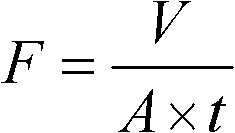High-flux composite reverse osmosis membrane
A reverse osmosis membrane, high-flux technology, applied in the field of water treatment, can solve problems such as low permeation flux, and achieve the effect of good hydrophilicity and anti-pollution performance.
- Summary
- Abstract
- Description
- Claims
- Application Information
AI Technical Summary
Problems solved by technology
Method used
Image
Examples
preparation example Construction
[0027] Preparation of composite reverse osmosis membrane: immerse the wet polysulfone support membrane in the polyamine aqueous solution containing acid receiver for 1-5 minutes, roll the surface of the support membrane with a rubber roller and squeeze it dry, and mix with the organic polysulfone containing aromatic polyacyl chloride The solution is contacted on one side to carry out the interfacial polymerization reaction. The composite film is dried in the air for 2-5 minutes, and then undergoes two-step heat treatment: the first step is to treat at 40-70°C for 3-5 minutes, and the second step is to treat at 70-110°C for 3-5 minutes. Then carry out two steps of rinsing again: the first step is to rinse 10-40 minutes in 30-60 DEG C of methanol weight ratio of 15% aqueous solution, and the second step is to rinse in 30-60 DEG C water for 10-40 minutes. The acid receiving agent wherein is triethylamine, or sodium hydroxide, or sodium carbonate, or trisodium phosphate, and the c...
Embodiment 1-6
[0030] Use 13.5wt% of UDELPS3500 polysulfone, 0.25wt% of water and 0.15wt% of nonylphenol polyoxyethyl ester phosphate dissolved in N, N-dimethylformamide, and scrape on the polyester non-woven fabric and then immersed in water to remove the solvent to obtain a polysulfone porous support membrane with a molecular weight cut-off of 9-100,000.
[0031] Immerse the wet polysulfone porous support membrane into an aqueous solution containing 3.0wt% triethylamine and 2.0wt% polyamine (m-phenylenediamine, sericin mixture) for 3 minutes, and roll the support membrane with a rubber roller After draining the aqueous solution and blowing dry the surface of the support membrane with nitrogen, contact with n-hexane solution containing 0.10wt% trimesoyl chloride on one side to carry out interfacial polymerization reaction for 40 seconds. The obtained composite film is dried in the air for 5 minutes, and then undergoes two steps of heat treatment: the first step is to treat at 60-70°C for 3-...
Embodiment 7-12
[0034]As in the previous examples, according to the above method, an aqueous solution containing 3.0 wt% triethylamine and 1.0-4.0 wt% polyamine (m-phenylenediamine: sericin = 25: 1) was used, and 0.10 wt% polyamine The n-heptane solution of trimelliticoyl chloride is contacted on one side to carry out interfacial polymerization reaction for 60 seconds to prepare a composite reverse osmosis membrane. These several examples are to investigate the effect of the polyamine content in the aqueous solution on the performance of the composite reverse osmosis membrane.
[0035] Example
PUM
 Login to View More
Login to View More Abstract
Description
Claims
Application Information
 Login to View More
Login to View More - R&D
- Intellectual Property
- Life Sciences
- Materials
- Tech Scout
- Unparalleled Data Quality
- Higher Quality Content
- 60% Fewer Hallucinations
Browse by: Latest US Patents, China's latest patents, Technical Efficacy Thesaurus, Application Domain, Technology Topic, Popular Technical Reports.
© 2025 PatSnap. All rights reserved.Legal|Privacy policy|Modern Slavery Act Transparency Statement|Sitemap|About US| Contact US: help@patsnap.com



